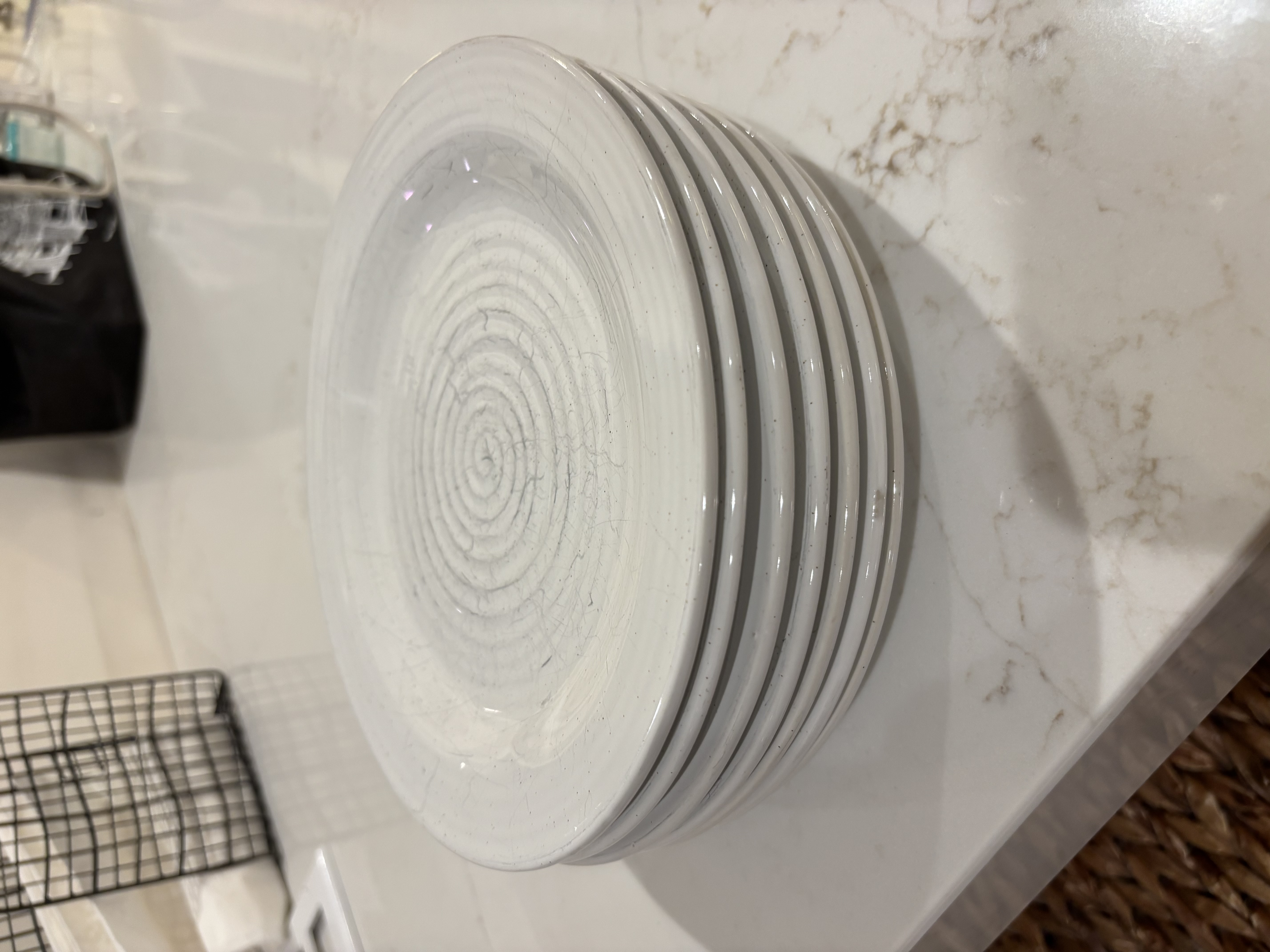Tower of Hanoi In Your Kitchen
By Morgan Dixon
The Hidden Mathematics of Your Dishware
Every kitchen contains a fascinating mathematical phenomenon that most people never notice. Your dishes, cups, and cookware follow the same principles as the classic Tower of Hanoi puzzle, but with a crucial difference: the tower is never fully rebuilt from scratch.
This creates an uneven distribution of usage that affects everything from wear patterns to replacement decisions. Let's explore how this simple stacking behavior shapes our daily lives.
What is Casual Research?
This investigation exemplifies casual research - the process of investigating one's life and what makes your world tick. Casual research involves observing everyday patterns, asking curious questions about mundane activities, and discovering the hidden principles that govern our daily experiences. It's about finding extraordinary insights in ordinary moments, like realizing your kitchen follows mathematical laws you learned in computer science class.
The Stack Effect: Why Position Matters
In the classic Tower of Hanoi puzzle, disks are moved one at a time, with smaller disks always on top of larger ones. Your kitchen follows a similar rule: clean dishes go on top of the stack, and you take from the top when you need them.
However, unlike the puzzle where the entire tower is systematically moved, your dish stack is never fully "solved." You add clean dishes to the top and remove dirty ones from the top, creating a first-in-last-out system that heavily favors the most recently cleaned items.
The Mathematics
If you have a stack of 7 plates and use 2 plates per day, the top plate gets used every other day, while the bottom plate might go weeks without being touched. This creates an exponential decay in usage frequency as you move down the stack.
The Cabinet Phenomenon
The same principle applies horizontally in cabinets and cupboards. Cups stored in the front are easily accessible and get used frequently, while those in the back remain untouched for extended periods. This creates a front-to-back usage gradient that's remarkably consistent across households.
This "proximity bias" means that items closest to your natural reach pattern dominate your daily routine, while perfectly functional items languish in harder-to-reach positions.
Real Kitchen Example

A real kitchen demonstrating the Tower of Hanoi principle - notice how dishes are stacked with the most recently used items on top.
Usage Pattern Simulation
Watch how usage patterns develop over time. Green items start new, red items become heavily used.
Plate Stack Simulation
Clean plates added to top, dirty plates taken from top
Simulation runs automatically to show usage patterns over time
Color Legend
The Pattern in Action
This video perfectly demonstrates the Tower of Hanoi principle in everyday life. Starting with the top plate from our stack, we work our way down to reveal the bottom plate shown in the image above. Notice the dramatic difference in wear and usage patterns.
The top plates show significant wear from constant use - scratches, discoloration, and signs of frequent washing. As we move down the stack, each plate shows progressively less wear, with the bottom plates appearing almost pristine.
This happens because most households have more plates than people, meaning only the top 3-4 plates get pulled out on average. The bottom plates remain largely untouched, creating this natural stratification of usage that mirrors the mathematical principles of the Tower of Hanoi puzzle.
Real-World Implications
Wear Patterns
Items at the top of stacks or front of cabinets show significantly more wear and need replacement sooner, even when purchased at the same time.
Hidden Waste
You might own dishes or cups that haven't been used in months or years, representing hidden financial waste and storage inefficiency.
Hygiene Considerations
Items at the bottom of stacks can accumulate dust or develop odors from prolonged storage, even when technically clean.
Organization Strategy
Understanding this pattern can help you optimize kitchen organization and make more informed purchasing decisions.
Breaking the Pattern
Awareness of this phenomenon opens up several strategies for more equitable usage:
- •Periodically rotate your stacks by taking from the bottom instead of the top
- •Arrange cabinets to make back items more accessible
- •Consider whether you actually need as many dishes as you currently own
- •Store dishes horizontally when possible to create more equal access
The Beauty of Everyday Mathematics
The Tower of Hanoi in your kitchen reveals how simple rules can create complex patterns over time. By understanding these hidden mathematical principles in our daily lives, we can make more informed decisions about everything from organization to consumption. Sometimes the most profound insights come from paying attention to the ordinary.
Casual Research in Action
This study demonstrates the power of casual research - taking time to investigate the patterns and principles that shape your personal world. What started as a simple observation about dish stacking revealed deeper truths about usage patterns, mathematical principles, and human behavior. Casual research empowers you to become a scientist of your own life, discovering insights that can improve your daily decisions and deepen your understanding of the world around you.